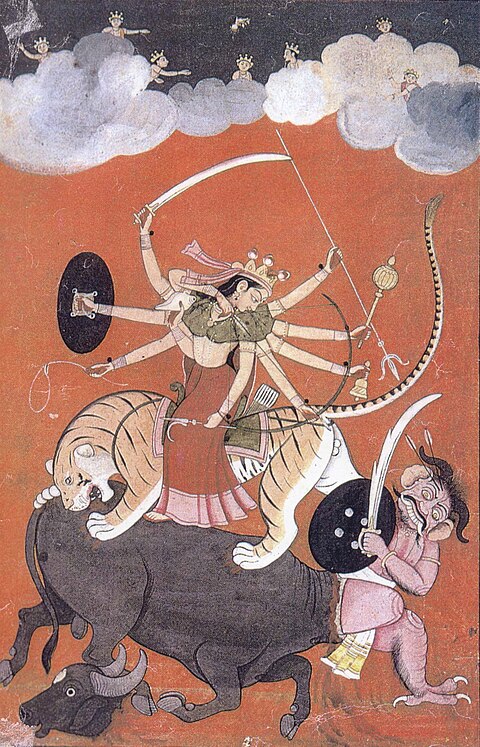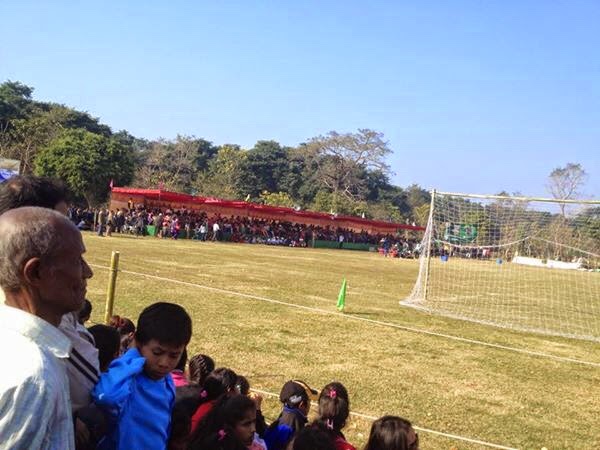बुद्ध पुर्णिमा
When is Buddha Purnima
This year Buddha Purnima is on Baishak 31, 2071, which is May 14, 2014 in English calendar. This year Lord Buddha becomes 2556 years old.
Buddha left his physical body at the age of 80. There he attained “Pari Nirvana”. Nirvana is beyond life and death.
Life of Buddha
It is believed that immediately after his birth, Siddartha took seven steps towards the north and raising a finger in the air, indicating ‘he was the supreme of the world and that was his final birth’.
Siddhartha then was born near a pond in Lumbini Garden way to his grandfather’s house. He was given a bath at the pond in the Lumbini garden. The pond is known as Siddhartha Kunda. Kunda means a small pond in Sanskrit. Mayadevi’s idol was built at the very spot where Siddhartha was born. Maya Devi died seven days after giving birth to Siddartha Gautam.
Siddartha grew up to be a very good prince. He loved all living beings. He was married to Yasodhara at 16 and had a son Rahul. Until age of 29 Siddartha lived luxurious life of a Prince. He had all pleasures and comforts, a prince could have.
Quest of remedy to suffering
However, it did not take a while to change his life drastically. While passing through his city he started observing different types of sufferings mankind were going through. He felt those sufferings in him. Buddha saw sickness, old age and death. He also saw a monk who donated all he had and searching for welfare of mankind all his life. Buddha chose to become like the monk.
He wanted to find the end to those sufferings. One day he quietly walked out of the palace in search of remedies of those illnesses. He started to meditate under a tree. It took him a very long time to understand the facts of life. He attained nirvana at the age of 80.
He found sorrow and desire are the main cause of all the evil and suffering of every living being.
In 1950 at the first conference of the world Fellowship of Buddhists was held in Sri Lanka. In the conference a resolution was passed to celebrate Buddha’s Birthday on the full moon day of Baishakh i.e. May. It was requested to all the heads of the states to celebrate the full moon day of Baishakh i.e. May and declare a public holiday in honor of Buddha.
Buddhist scriptures
Dharmapada
The Dhammapada (धर्मपद) is a versified Buddhist scripture traditionally ascribed to the Buddha himself. The title, Dhammapada, is a compound term composed of dhamma and pada, each word having a number of denotations and connotations. Generally, dhamma can refer to the Buddha's "doctrine" or an "eternal truth" or "righteousness" or all "phenomena" and, at its root, pada means "foot" and thus by extension, especially in this context, means either "path" or "verse" or both. In simple words Dharma is spiritual living and pada means foot or way, so Dharma Pad is way of living a spiritual life.
Tripitaka
Tripitaka is a traditional term used to describe their various types of standard scriptures. Tripitak traditionally contains three baskets of teachings: a Sutra Pitika , a Vinaya Pitika and an Abhidharma Pitika. As it has three Pitika it is called Tripitaka.
Cause of suffering
Buddha's Four Noble Truths
Buddha understood these Four Noble Truths
1. Life means suffering
There is Suffering, and it is common to all, no one can escape it.
2. The origin of suffering is attachment.
Cause of Suffering is we ourselves. Apart from those suffering which are natural, Buddha explains the main cause of suffering is the greed and lust. The physical attachment is very dangerous. One creates suffering from his/her own greed. One wants more that what s/he deserves and grow grief of losing them.
3. The cessation of suffering is attainable.
To end the suffering, one has to stop doing what causes suffering
4. The path to the cessation of suffering.
Narvana is the end the suffering: enlightenment is the way: Buddha suggested The Noble Eightfold Path to end suffering and live fulfilled life.
End of suffering
The only way to get rid of suffering is to live satisfied with what one has. Don't collect unnecessary materials. Collecting unnecessary things are collecting grieves and sorrow for future. The state of end of suffering is called Nirvana. Nirvana is to reach beyond life and death.
The Noble Eightfold Path
Gautam Buddha described 'The Noble Eightfold Path’: the way to the end of suffering.
It is a practical guideline to ethical and mental development with the goal of freeing the individual from attachments and delusions. Finally it leads to understanding the truth about life and reality. The eight aspects of the path are highly interdependent principles and are closely interrelated with each other.
1. Right View
2. Right Intention
3. Right Speech
4. Right Action
5. Right Livelihood
6. Right Effort
7. Right Mindfulness
8. Right Concentration
All these things are explained by the mantra:
Buddha Mantra
बुद्धं शरणं गच्छामि। : Buddham saranam gachhami.
धर्मं शरणं गच्छामि। : Dharmam saranam gachhami.
संघं शरणं गच्छामि। : Sangham saranam gachhami.
Meaning of Buddha Mantras
बुद्धं शरणं गच्छामि।
I go to under shelter of Buddha.
(I go to Buddha, because Buddha is the guide.)
धर्मं शरणं गच्छामि।
I go to shelter of Dharma.
(The Dharma is the path I follow.)
संघं शरणं गच्छामि।
I go to shelter of Shangha.
(The Sangha are the teachers or companions along the way, without teacher it is hard to learn)
Therefore with all three: Buddha, Dharma and Sangha, we can follow the way of Buddha.
Buddha's basic teachings
Buddha basically teaches us the following;
Do not harm or Kill any living creatures.
Do not steal things or do not take anything which not yours.
Do not do any sexual misconduct.
Do lie speak truth always.
Do not drink or eat anything which intoxicates your brain.






























